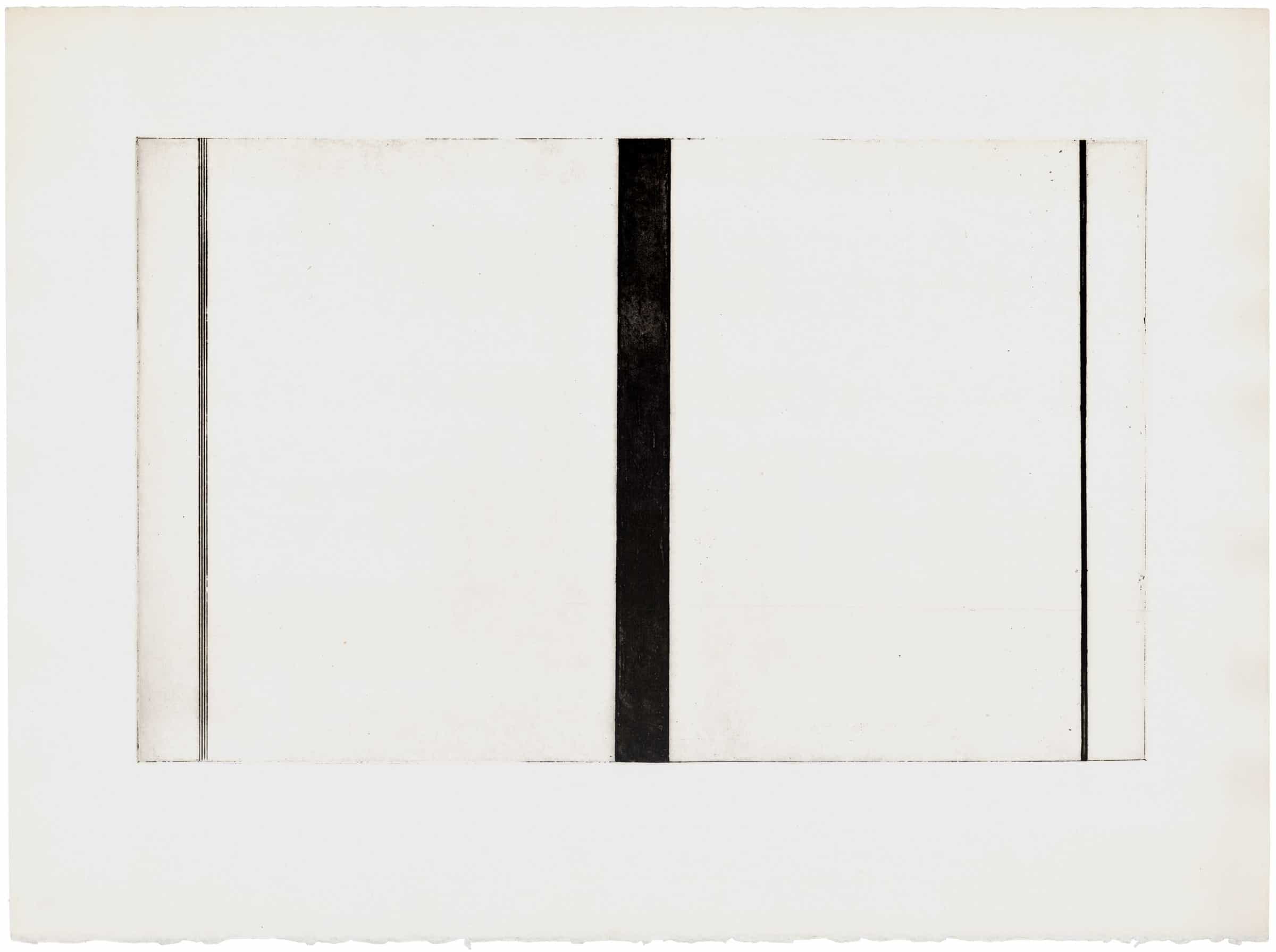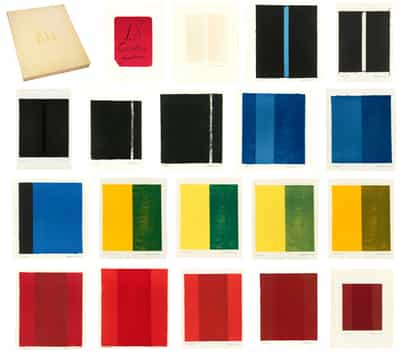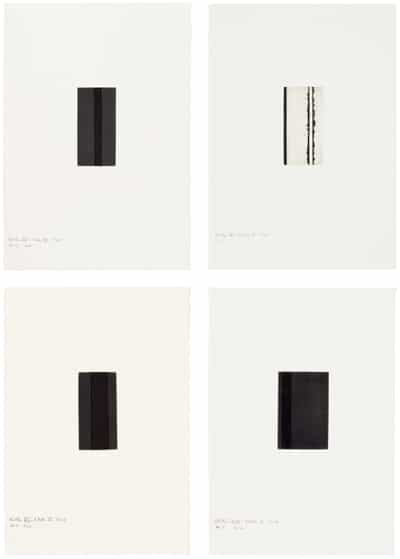About the Artist
Barnett Newman (1905-1970) studied at the Art Students League for much of the 1920s. Shortly after the beginning of World War II, he stopped painting and destroyed his early paintings. He resumed his search for what he termed “the tragic and timeless” in 1948; by the time of his first one-person exhibition at Betty Parsons Gallery (1950) he was forty-five years old. Newman used scale (his 1951 painting Cathedra is eighteen feet long) and sensual color to create pictorial envelopes that could overwhelm and transform the viewer.
Of all the abstract expressionists, only Newman and Robert Motherwell seriously explored printmaking, and both worked at ULAE. Newman viewed printmaking as a series of challenges. Not only did the relatively small size of lithographic stones require a substantial adjustment from his grandly scaled canvases, but he initially found it difficult to achieve his trademark sense of floating luminosity via ink-on-paper. In 18 Cantos, 1963-1964, he succeeded by exploiting accidents that occurred during the printmaking process, and by taking advantage of the way the margin of a sheet of paper naturally divided space. Newman’s respect for lithography is evident in his preface to 18 Cantos. “For me, it [lithography] … is like a piano or an orchestra, and as with an instrument, it interprets. And as in all the interpretive arts, so in lithography, creation is joined with the ‘playing;’ in this case not of bow and string, but of stone and press.”


